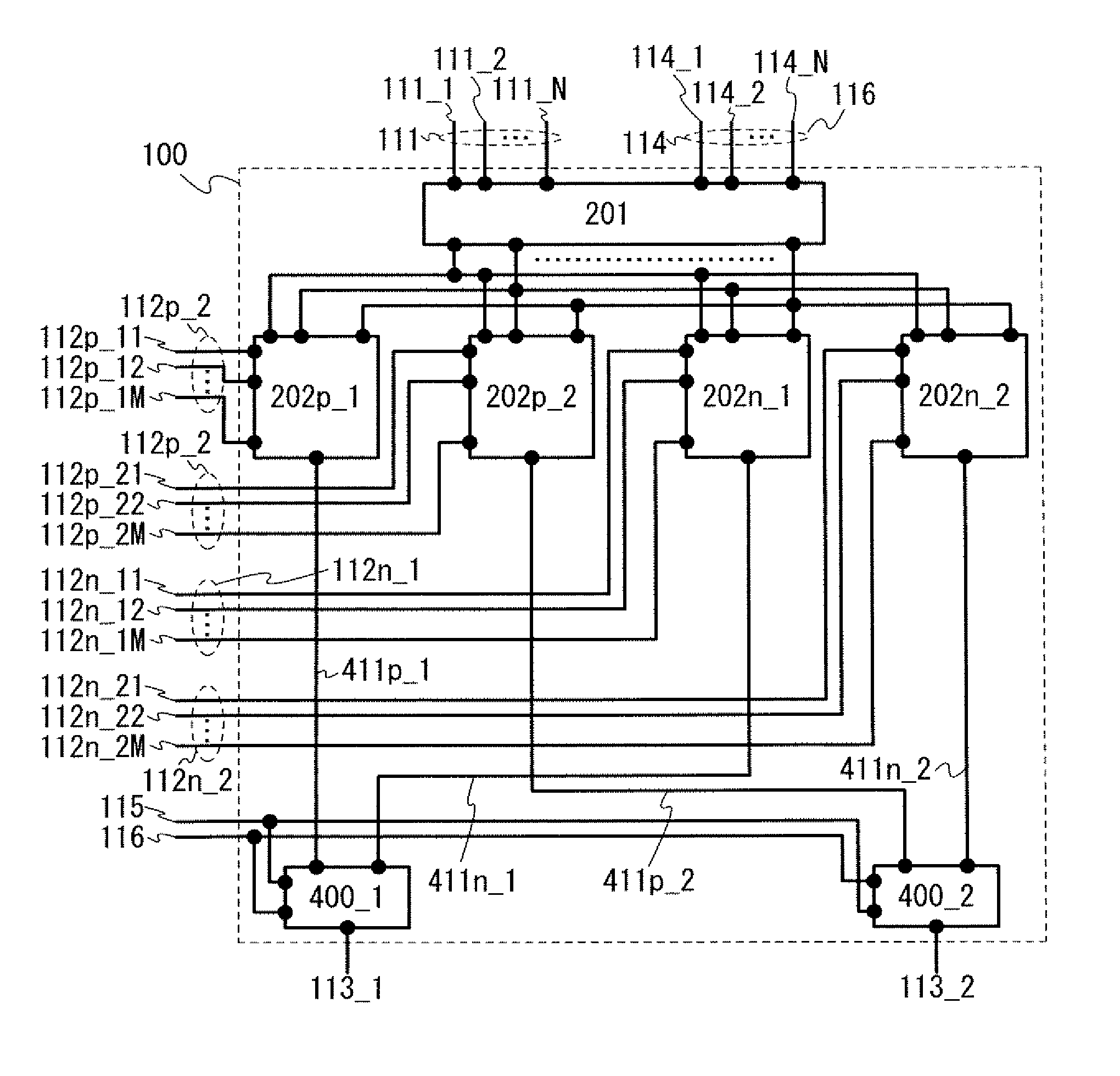Display device, liquid crystal display device and electronic device including the same
- Summary
- Abstract
- Description
- Claims
- Application Information
AI Technical Summary
Benefits of technology
Problems solved by technology
Method used
Image
Examples
embodiment 1
[0085]In this embodiment, a digital-analog converter portion will be described. The digital-analog converter portion of this embodiment converts one digital signal (e.g., a digital signal with N bits (N is a natural number of 2 or more)) into n (n is a natural number of 2 or more) analog signals. In order to realize this, n groups (e.g., voltage groups or current groups) are input to the digital-analog converter portion. Note that a structure in which some of the respective groups input to the digital-analog converter portion can be used as one in common is possible. In this case, less than n groups are input to the digital analog converter portion.
[0086]Note that the values (e.g., voltage or current) of the n analog signals are different from each other However, some of the n analog signals have the same value in some cases. Alternatively, all the values of the n analog signals are the same in some cases. For example, in the case of a digital signal with the maximum or minimum gray...
embodiment 2
[0137]In this embodiment, one example of the digital-analog converter portion 100 in which one digital signal is converted into two analog signals as shown in FIG. 1A will be described with reference to FIG. 2A.
[0138]The digital-analog converter portion 100 includes a circuit 201, a circuit 202_1, and a circuit 202_2.
[0139]The circuit 201 is connected to the wiring group 111 and a wiring group 114. The circuit 202_1 is connected to the wiring group 112_1, the wiring 113_1, and an output terminal of the circuit 201. The circuit 202_2 is connected to the wiring group 112_2, the wiring 113_2, and the output terminal of the circuit 201.
[0140]The wiring group 114 includes a plurality of wirings. For example, the wiring group 114 includes N wirings of wirings 114_1 to 114_N.
[0141]An inverted digital signal is input to the wiring group 114. Therefore, the number of bits of the inverted digital signal corresponds to the number of wirings in the wiring group 114 in many cases. For example, i...
embodiment 3
[0205]In this embodiment, one example of the digital-analog converter portion 100 which can separately set the polarity of each analog signal will be described with reference to FIG. 6A.
[0206]In order to separately set the polarity of each analog signal, for example, the digital-analog converter portion 100 has a first mode and a second mode. Even when the digital signals with N bits are input, the values (polarities) of the analog signals are different from each other in the first mode and the second mode in many cases.
[0207]For example, each analog signal has a positive potential in the first mode and has a negative potential in the second mode. Accordingly, the polarity of each analog signal can be separately set. However, this embodiment is not limited to this. The values and the polarities of the analog signals are the same in the first mode and the second mode in some cases. Alternatively, the values of the analog signals can be different from each other in the first mode and ...
PUM
 Login to View More
Login to View More Abstract
Description
Claims
Application Information
 Login to View More
Login to View More - R&D
- Intellectual Property
- Life Sciences
- Materials
- Tech Scout
- Unparalleled Data Quality
- Higher Quality Content
- 60% Fewer Hallucinations
Browse by: Latest US Patents, China's latest patents, Technical Efficacy Thesaurus, Application Domain, Technology Topic, Popular Technical Reports.
© 2025 PatSnap. All rights reserved.Legal|Privacy policy|Modern Slavery Act Transparency Statement|Sitemap|About US| Contact US: help@patsnap.com



